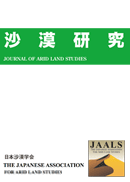Agricultural sustainability and food security in arid and semi-arid areas of the Aral Sea Basin are limited by the salinization of arable land, and by water availability. The biological potential of some agricultural crops to withstand the salinization and water deficit may become a key component of farming systems. Several crops were selected for this study to investigate their performance under saline water and soil conditions in Karakalpakstan. Growth performance and yield productivity were analyzed in the downstream arid zone of the Aral Sea Basin at two soil salinity levels, calculated as total dissolved salts (TDS): low saline (< 0.9 g/L), and medium saline (> 1.5 g/L) for corn varieties Uzbekiston 601 ЕСВ and Karasuv 350 AMB, sorghum varieties Korabosh and Karlik of Uzbekistan, and the recently released pearl millet variety Hashaki1. Due to deficit of fresh water, mineralized (3.0-9.0 g/L) surface water was applied for irrigation twice during the growing season at 800 m3/ha. Greater soil salinity adversely affected growth performance measurements (plant survival, plant density, plant height) and yield components of maize and to a lesser extent sorghum and pearl millet. Average threshold salinity levels for examined corn, sweet sorghum and pearl millet varieties ranged from 2.60 to 8.5 dS m
-1 and from 2.4 up to 4.6 dS m
-1 for sorghum entries respectively. Corn fields on medium saline soils with heavy texture showed a reduction in green and dry biomass of over 50%.
View full abstract
